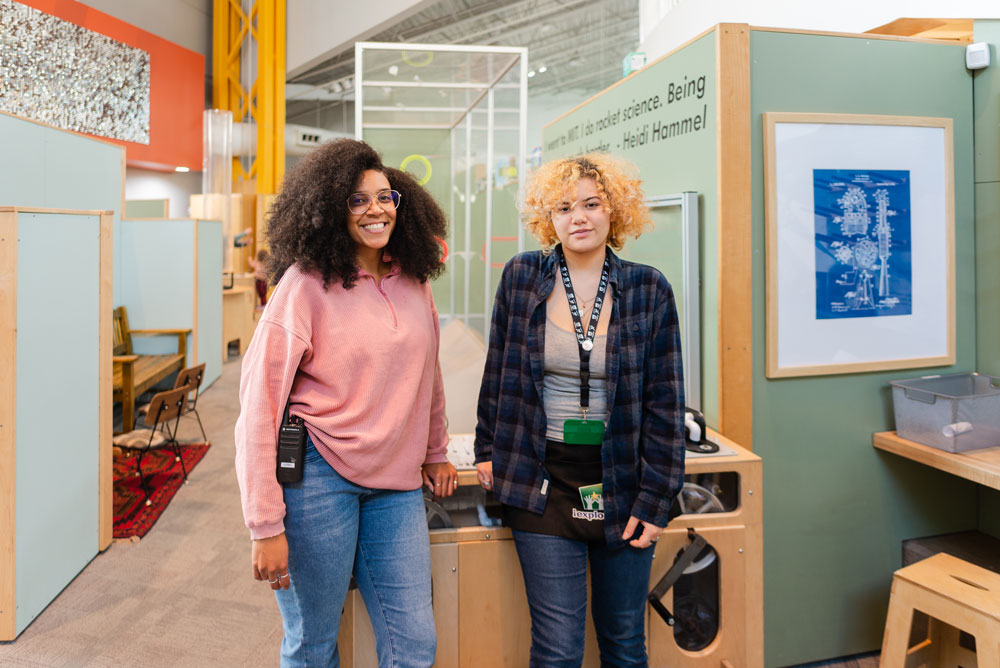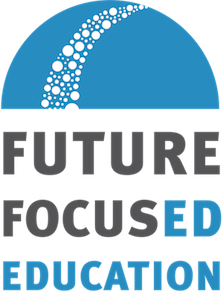Innovation Zones Offer Fertile Ground for High School Transformation

"With the abundant financial resources the state has garnered, New Mexico is ripe for transformation of the high school experience. Let's go big. The time is now."
In the wake of the pandemic I continue to be enamored with the second law of thermodynamics and, with it, the concept of entropy. Entropy tells us that all things have a tendency to fall apart.
We had a front row seat for this unraveling during the pandemic. Physics also teaches us that when things do fall apart, it takes more energy to put them back together the way they were, compared with migration to their natural state. The good news is that an opportunity to abandon the failed standardized approach to education, paired with once-in-a-generation access to resources, rests right here in New Mexico. Transformation is on the horizon and has already begun.
The Martinez/Yazzie lawsuit demands the educational program in the state of New Mexico be both adequate and sufficient for school age children, and requires the experience in schools across New Mexico to change immediately. The lawsuit has found fertile ground for change with the leadership of Governor Michelle Lujan Grisham and her blueprint for the Public Education Department.
In my five years in Santa Fe I learned without question that New Mexico is on the cusp of something special and is on track to ensure that childhood well-being is no longer negotiable.
Our state is blessed that the Executive, the Legislative Education Study Committee, the Legislative Finance Committee, and their world-class staff have fully committed to appropriating vast resources to create the proper conditions for learning for young people across the state, including over $1 billion in new, recurring resources provided in the last few years. In fact, with respect to the game-changing early childhood and post secondary education policies and programs already in place, the nation is watching—and learning. However, we must not miss this window of opportunity to support the current generation of students. The time is now for the high school experience to meet the needs of the new economy and put these new found resources to good use.
Resources, however, are only a small sliver of the equation. I’m convinced that the academic trajectory of New Mexico youth in high school today will be set by the classrooms, schools, districts, and ultimately communities who can blend and braid these resources in innovative ways to develop hyper-local, community driven educational experiences for high school students immediately, not five years from now. The Governor’s Innovation Zones initiative, paired with HB126 carried by Representatives Romero and Lane to refresh graduation requirements, offers this immediate opportunity for high school transformation.
The Promise of Innovation Zones
The New Mexico Public Education Department’s new Innovation Zones initiative led by Secretary Steinhaus holds newfound promise to strategically blend and braid resources into true innovation and transformation. This project, in partnership with Future Focused Education and the Los Alamos National Laboratory Foundation, aims to build a high school community schools model to expand on the groundbreaking work already underway in many New Mexico communities by taking advantage of the new graduation requirements introduced by the LESC.
The state has already made admirable strides in transforming schools across the state using community school strategies. Evidence-based community schools leverage and coordinate the resources of the whole community to build a thriving school for students, families, school staff, and community partners. When blending the Innovation Zone project with the six elements of evidence-based community schools, this strategy for high school transformation reveals four levers.
- Rigorous, culturally-responsive instruction that integrates community-driven graduate profiles with meaningful capstone experiences
- Expanded and enriched work-based, career-technical, and experiential learning time strategies aligned with core academics so that curriculum and instruction are simultaneously rigorous and relevant
- Personalized and integrated academic, social, and emotional learning supports establishing a culture of belonging, safety and care
- Statewide infrastructure support for student, family, and community engagement, aligning workforce collaboration, collaborative leadership, shared power and voice, resource coordination, and post-secondary alignment
Experiential Learning and Extended Learning Time
The Martinez/Yazzie lawsuit reminds us that if in-school conditions support and strengthen students' identities, student achievement tends to benefit. Cultural and ethnic identities vary greatly across the diverse state of New Mexico. Clearly there is not a one-size-fits-all silver bullet approach to establish these varied experiences for learning that affirm the diversity in our state.
In order to fully engage students and ensure that we build thriving schools, the high school experience should look wildly different in a farming community than on tribal land or in the metro area. The experiential learning opportunities for high school students need to be hyper-local and achieved in partnership with the community.
In this model, graduate profiles are built by local communities and rely upon local wisdom to prioritize the outcomes that most benefit the community. The school and community then partner to provide capstone experiences and experiential learning opportunities both in the high school and in the community to demonstrate competency in these outcomes. This model is immeasurably more difficult than filling out a scantron, but fosters authentic relationships and demands more rigorous approaches to demonstrating competency than the status quo.
Math tests let teachers know what students don’t know—a valuable tool for teaching and learning. Capstone experiences are more rigorous, explore student assets, and measure competency in the “soft skills” the economy demands like the ability to contribute to teams, communicate effectively, or solve complex problems using critical thinking.
This approach also ensures that accountability to high standards in outcomes is reciprocal and the responsibility of both the school and the community. It also ensures that extending learning time enriches the student experience—not just expands on more of the same. Schools and communities work together to foster authentic academic and experiential outcomes to ensure that students have equitable opportunities for success after graduation.
Many schools and districts are already innovating. In fact, Las Cruces Public Schools added an experiential learning day to every month of the calendar this year using their extended learning program. Students will have a portfolio documenting their learning by the end of the year - an excellent example of the Innovation Zone strategy in action.
A Call to Action
Let’s double our energy on community-connected innovation to build an educational system that provides universal access to engaging, relevant, academically-challenging experiences. Let’s leverage the abundance in the state of New Mexico to ensure our extended learning time programs provide work-based, career-technical, and experiential learning opportunities for all high school students. Let’s improve the data we use for student success and system improvement with rigorous capstone experiences giving us meaningful metrics on 21st century skills. Let’s provide the personalized, integrated support every student needs to engage in the curriculum.
The need for student engagement has never been more crucial as we emerge from the pandemic in a state that leads the nation in youth disengagement. New Mexico is home to vast assets that have traditionally been undervalued and unappreciated. With the abundant financial resources the state has garnered, New Mexico is ripe for transformation of the high school experience. Let's go big. The time is now.


